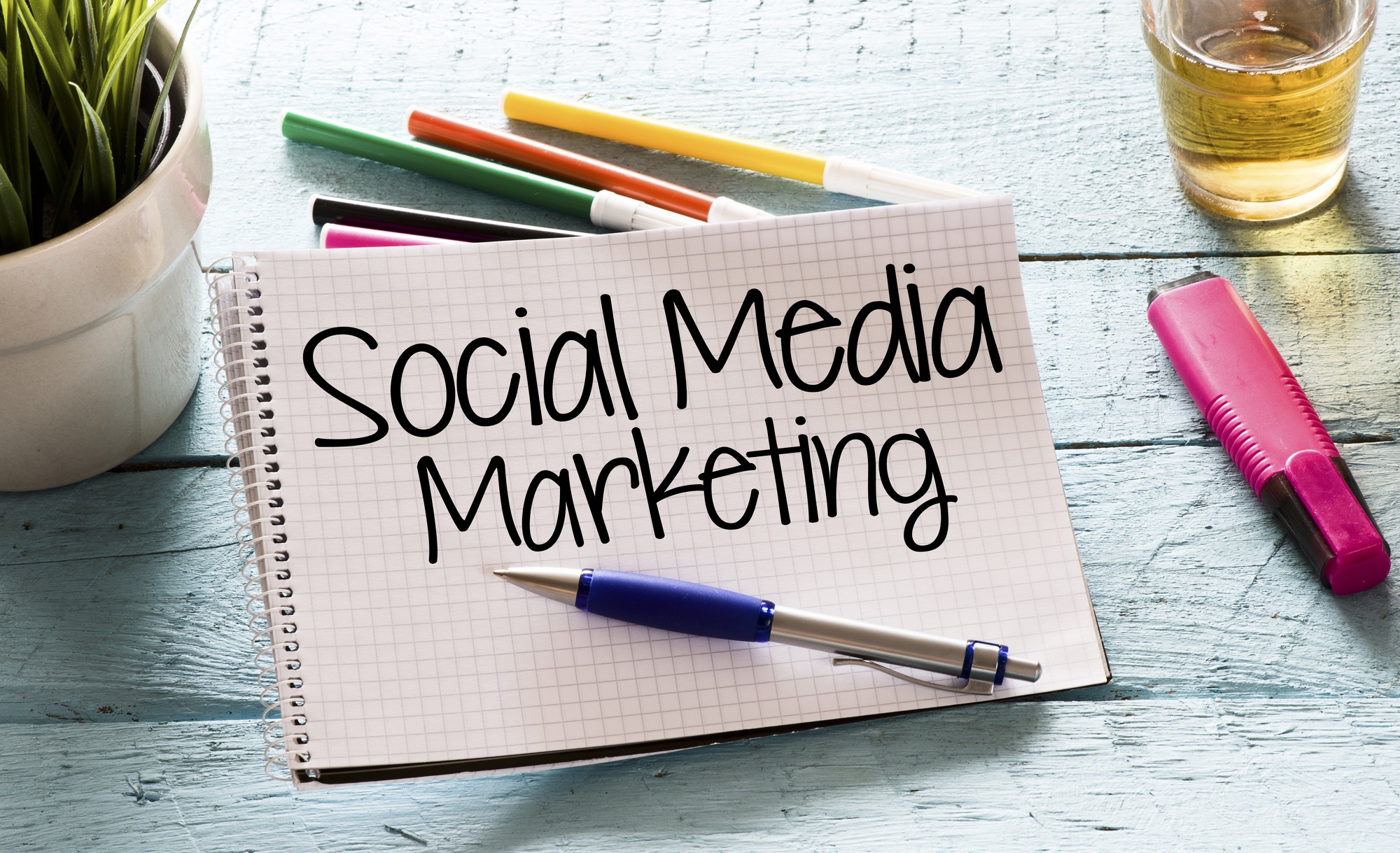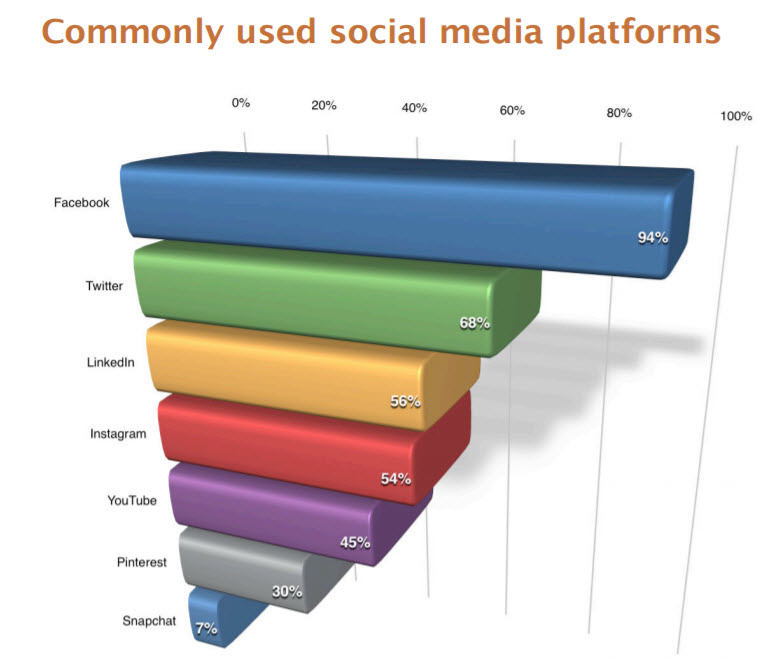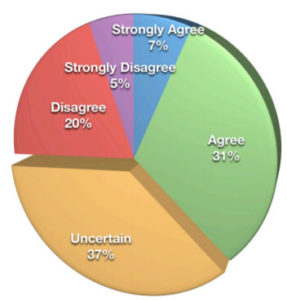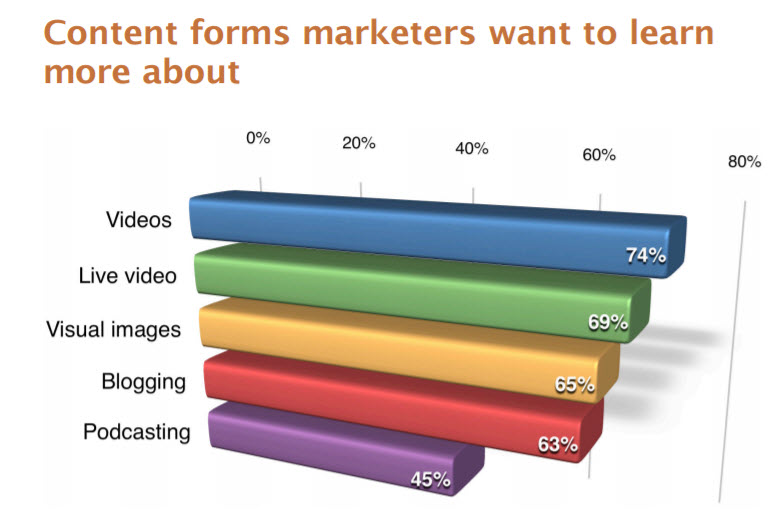Everyone has their own non-Christmas version of Christmas. Mine is when the 2017 Social Media Marketing Industry Report comes out. Geeky? Most definitely. But since my background is in market research, social media and small business consulting, this report is just my thing. The report highlights where other marketers are focused in managing their social media and where they plan to put their efforts in the future.
It’s always important to take a step back and understand who is taking the survey. In this case, the respondents are marketing pros who are from small sized businesses: 22% are self-employed, 39% are from businesses of 2 to 10 employees and 11% from businesses that have 11-25 employees. That information is noteworthy because the marketing activity of smaller businesses is often very different from big brands.
Here are my top take-aways from the report and what they mean for your small business
#1 Facebook is still the frontrunner for social media activity and advertising.
As Facebook evolves, marketers are focused on how they can keep up with its evolution. The graph below shows that 94% of marketers cited Facebook as a commonly used social media platform. Elsewhere in the report, 62% of marketers reveal they consider Facebook to be their most important platform, and 74% cite Facebook Messenger as the emerging tech they’d most like to learn about. If you are a small business putting much of your effort into Facebook, then you are clearly in line with other businesses. Facebook knows that businesses like you are depending on their platform, and they are continually coming out with new programs to support small businesses.
#2 Most marketers aren’t measuring ROI on their social media efforts.
If you are still struggling to figure out your ROI from all those hours on social media, you are not alone. Most marketers see social media as part of generating leads and improving sales, but more than a third are still in the dark about measuring ROI. The pie graph below shows marketers’ confidence in measuring ROI. Only 38% agreed or strongly agreed with the statement “I am able to measure the return on investment (ROI) for my social media activities.” In my opinion, this makes sense. After all, in offline marketing there are plenty of areas where we can’t measure ROI and can only guess at the return. After all, how do you measure the ROI of a highway billboard? That being said, as technology improves its likely that measuring ROI will get somewhat easier.
#3 Marketers use social media to increase exposure and traffic and develop loyal fans.
It’s always fascinating for me to learn what purpose social media serves for small businesses. This report found that 88% of marketers are using social media to increase exposure, 78% to increase traffic and 69% to develop loyal fans. Some other perceived benefits of social media include gaining marketplace insight, generating leads, increasing thought leadership, growing business partnerships and improving sales. It’s interesting that even though most marketers aren’t yet able to measure ROI on social media (see point #3 below), over half recognize that it is contributing to sales overall.
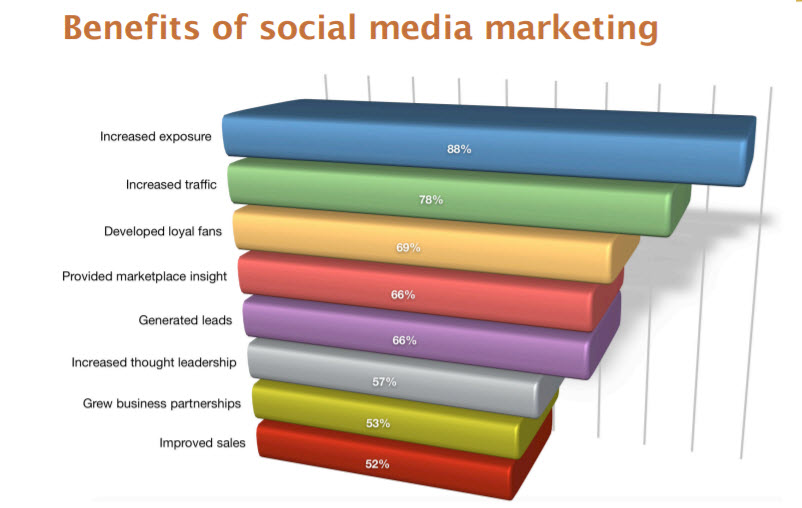
#4 Use of videos is gaining momentum, but not necessarily on YouTube.
74% of marketers have expressed interest in learning more about video and adopting this content creation format in the future. But according to the report YouTube usage is down. When ranking the most common platforms, YouTube declined from 53% to 45% from 2016 to 2017. This is significant because it shows marketers will look outside YouTube for sharing all those newly-created videos. Since Facebook and Instagram both favor video sharing, we can anticipate that’s where these marketers will go. As a small business, you might find it beneficial to skip YouTube and go straight to Facebook for showing your short-form videos.
#5 Social Media Advertising is heating up, but not for all the platforms.
As the Facebook algorithm continually shifts to show less organic reach, it’s no surprise that businesses are turning to social ads to be seen. Again, Facebook is leading the pack on social advertising with a whopping 93%, followed by Instagram at a much lower 24%. This is possibly because both Facebook and Instagram can be managed through the Facebook Ads Manager or Power Editor. The percentage of people utilizing other platforms of social ads are trailing behind, with 15% using Twitter ads, 11% using YouTube ads, and Pinterest and Snapchat ads at 3% and 1% respectively.
So now that you know what other marketers are doing, what next? Well, if you are looking for some practical techniques to plan your social media strategically and efficiently, you can get my newly released book, The Social Media Cookbook: Strategic Marketing Recipes for Small Business Success at Amazon.com in Kindle or paperback HERE. Or if you want to taste of it, I can send you the free Facebook Chapter here.

